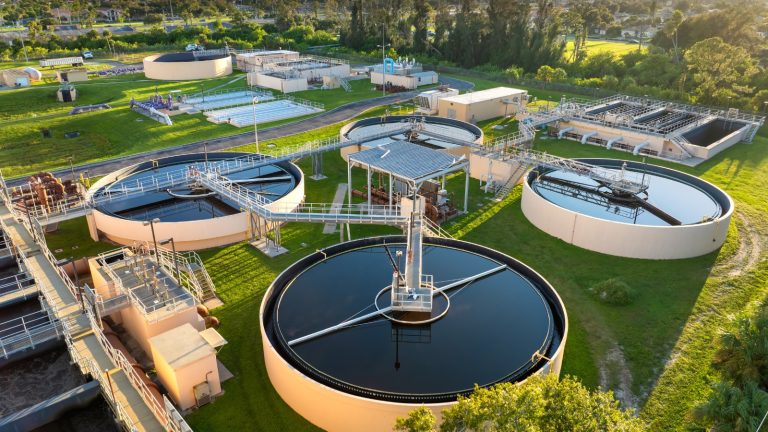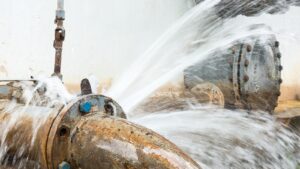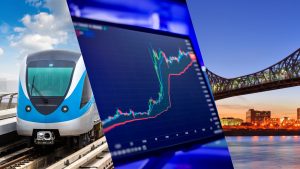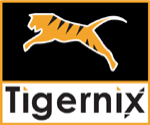In the twenty-first century, what do you think is the most valuable resource? It is undoubtedly water! However, in recent times, what we can notice is that the water networks have to bear a huge weight caused by dynamic circumstances such as climate change, growing urbanisation, ageing pipelines, and increased demand for water. All of them just put a strain on water authorities, which is why many governments and utilities are focusing on modern innovations to seek answers. Here comes ‘smart water infrastructure’, which is known to be systems that merge various digital capabilities, varying from software, sensors, automation, and data volume, to make the water distribution more reliable and sustainable.
This article dives into understanding the concept behind smart water infrastructure and what emerging trends influence its reliability in this digital age.
Key Emerging Trends in Smart Water Infrastructure

IoT and Real-Time Monitoring
Sensors Everywhere
One of the key features of these modern smart water systems is that they lean significantly on sensors. These little devices have the potential to detect pressure, flow, temperature, as well as pH and water levels and even symptoms of contamination.
The mechanism goes like this: They are located throughout the entire network. This means they are embedded inside treatment facilities, pipelines, pumping stations, and even near storage tanks.
The primary benefit water authorities receive through sensors is real-time visibility. Gone are the days when water utilities got the opportunity to discover that there are leaks once they caused damage. However, with sensors in the picture, they can now detect early pressure dips and flow fluctuations, looking at pipe stress in real-time. This acts as a digital engine to help utilities put the full stop to the issues before they become costly failures.
Digital Twin Integration
A digital twin just offers a digital simulation of a physically existing water system. Do you have an idea of its mechanism? It works by employing sensor data to reflect what is happening in real time.
As an advanced technology, many utilities employ digital twins when they are in need of simulating various water-related scenarios. For example, with digital twin technology, the authorities can keep in touch with how a pipe reacts to unexpected pressure fluctuations, or they can screen what occurs during heavy rain.
Digital twins empower engineers to achieve the following:
- It helps simulate problems before they come to the surface.
- This can give predictions on future failures.
- Digital Twin is good for planning better maintenance.
- It extends support when improving overall system performance.
The power of digital twin makes water networks more reliable and, most importantly, easier to manage from one location.
AI, Analytics, and Predictive Maintenance
Advanced Analytics and Demand Forecasting
With so many sensors producing data every second, how can water utilities actually make sense of them? This is where they have started relying on AI and analytics to see what is occurring. Since there are embedded machine learning algorithms, they help look at patterns in various aspects such as weather fluctuations, water usage, seasonal water demand, and previous consumption. This knowledge bridges the gaps in data and paves the way for utilities to more accurately predict water demand.
Once they understand demand better, cities can:
- Smoothly prevent water shortages.
- Stay away from unnecessary pumping.
- Find gaps and improve treatment operations.
- Can do the distribution planning more efficiently.
Predictive Maintenance and Leak Detection
With new technologies dominating the water industry, it is not necessary to wait for a pipe to burst any more. The smart water systems collaborate with artificial intelligence to detect future breakdowns easily. If the system spots any odd pressure decreases, flow anomalies, or vibration changes, it has the ability to automatically notify maintenance staff.
Predictive maintenance offers:
- They significantly reduce utility repair costs.
- PM prevents possible service disruptions.
- It can lower non-revenue water losses to a considerable level.
- It is possible to extend the lifespan of assets with predictive maintenance
- It is helpful in avoiding emergency outages.
Did you know that every year, AI-powered leak detection is used in numerous cities to save millions of litres of water?
Resilience, Efficiency, and Sustainability
Enhancing Utility Resilience
Smart water infrastructure is mainly employed to fulfil the purpose of increasing resilience, as it allows utilities to respond more quickly in the event of crises. When it identifies a leak or a pump failure, its automatic notifications alert operators immediately. Some advanced systems also include remote valve control, and it minimises the time required to indicate a problem.
Conservation and Water Loss Reduction
The capacity to bring down the water waste levels is one of the primary advantages of smart water systems for the modern world. The best advantage comes when smart meters allow the general public and industrial businesses to track their own use in real time. Utilities can also keep track of leaks at the tiniest scales. Even underground scanning is possible.
Quality Assurance and Public Health
You might know that water quality has become a significant concern in all communities. This is when the smart sensors come into play with their ability to continuously monitor turbidity, pH, conductivity, and the presence of dangerous compounds. If they identify any contamination, then the system can send out fast notifications. It certainly allows for a prompt response.
In another way, real-time quality monitoring protects public health with its potential to ensure that water satisfies all safety criteria.
Emerging and Advanced Architectures
Neuromorphic and Edge-AI IoT
Have you heard of neuromorphic IoT devices? It may be a new topic for you, but it is not a novel concept for the water world. Let us explain the science behind it.
The development of neuromorphic IoT devices is known to be a new trend in smart water technology. These devices replicate the human brain, and they function similarly to the human brain. This signifies that it has the power to process information swiftly and requires minimal energy. They do not need to transfer data to the cloud as they can execute AI models locally on the device itself.
The Capabilities:
- They can improve response times.
- Lowers energy consumption significantly.
- They reduce the communication costs.
On the other hand, it removes the blockages from sensors to operate more effectively in remote or low-power conditions.
5G and Network-Based Sensing
What we witness nowadays is that in certain areas, 5G networks are serving as environmental detectors. What does this mean?
It indicates that 5G signals can assist in a broad spectrum of environmental factors, monitoring floods, checking on rainfall intensity, and screening soil moisture changes. This information is useful for water authorities when they expect to control stormwater systems and prevent urban floods.
You can also pair IoT devices with 5G to witness a notable increment in the speed and accuracy of smart water monitoring.
Extracting the Best Out of Smart Water Infrastructure with the Right Partner

The way utilities and towns handle water is changing because of the concept of smart water infrastructure. Water networks are becoming more effective, robust, and sustainable thanks to technologies like cloud platforms, digital twins, IoT sensors, and AI analytics. New technologies like blockchain, network-based sensing, and neuromorphic IoT are advancing the sector even further. This is why you need to collaborate with the right software partner when making your water infrastructure smart. Tigernix has years of experience in executing successful smart water infrastructure projects employing Industry 4.0 capabilities. One tiny mistake in software deployment can completely destroy your entire smart framework.
Tigernix for a perfect balance between smart technologies and an uninterrupted water supply. Call for a demo today.







